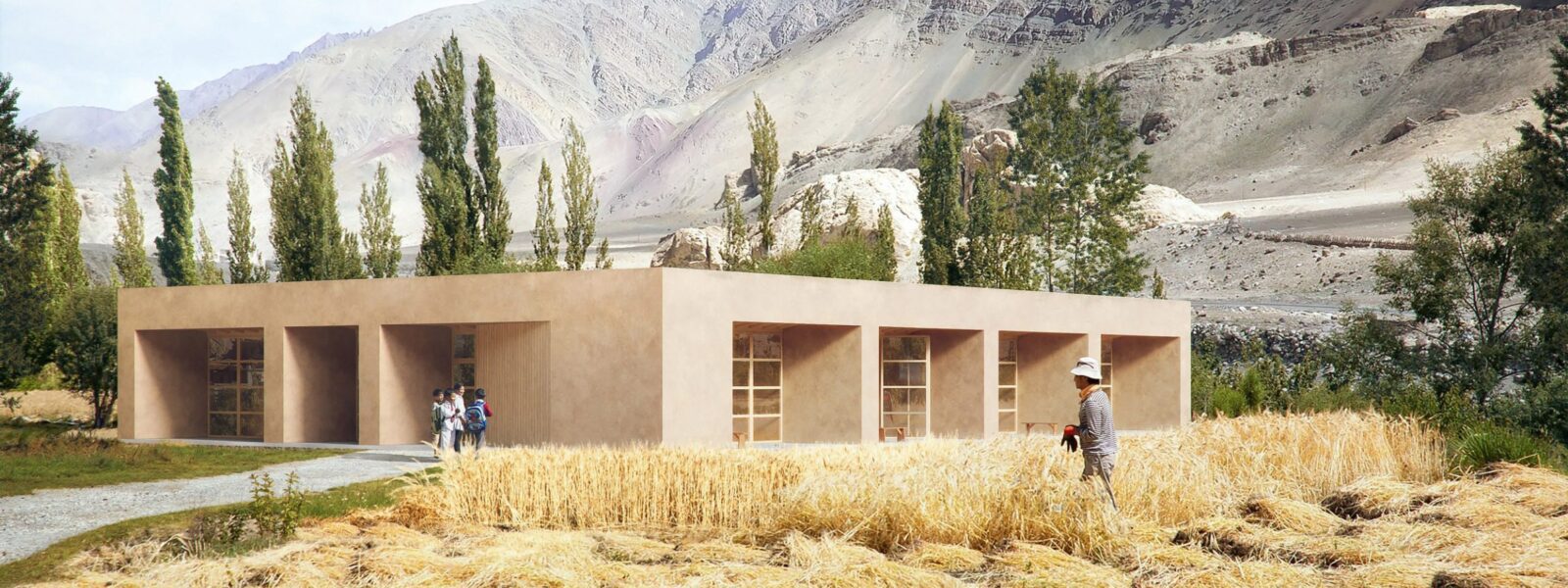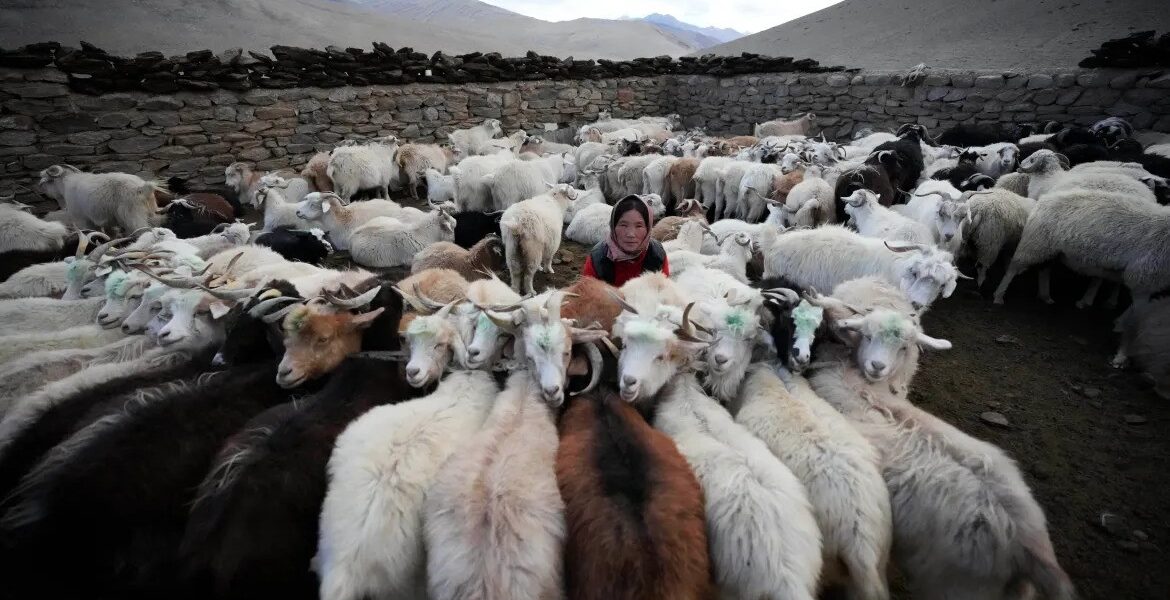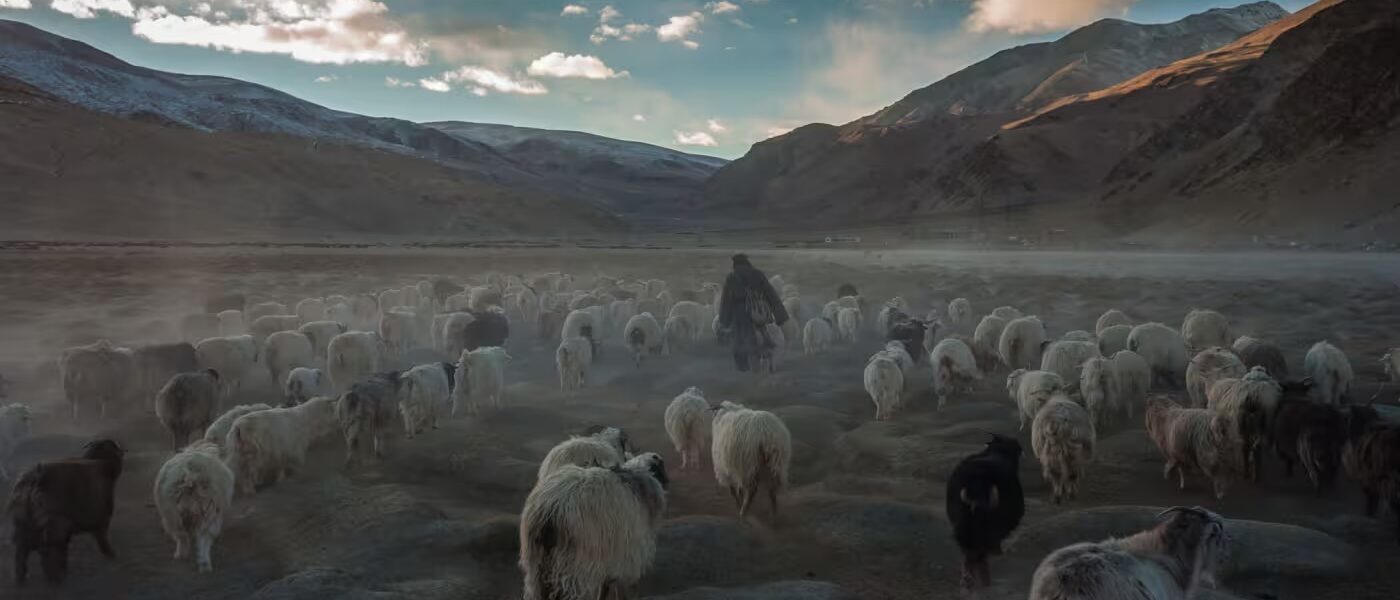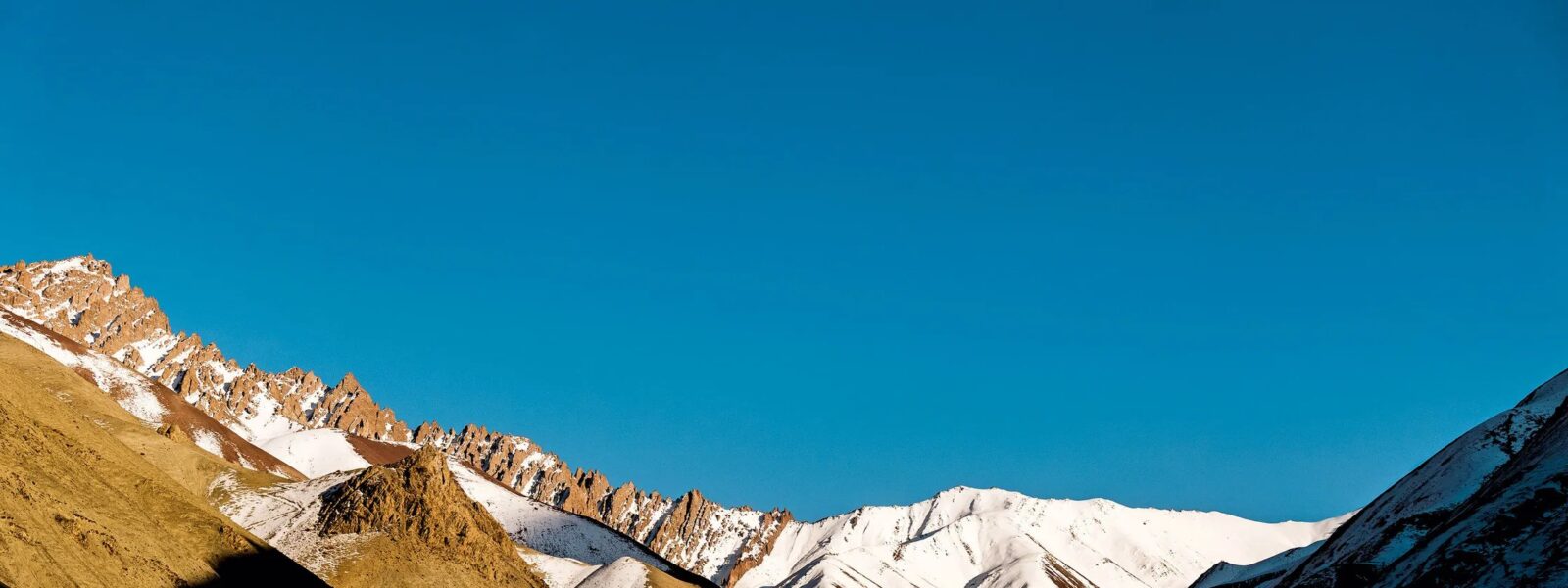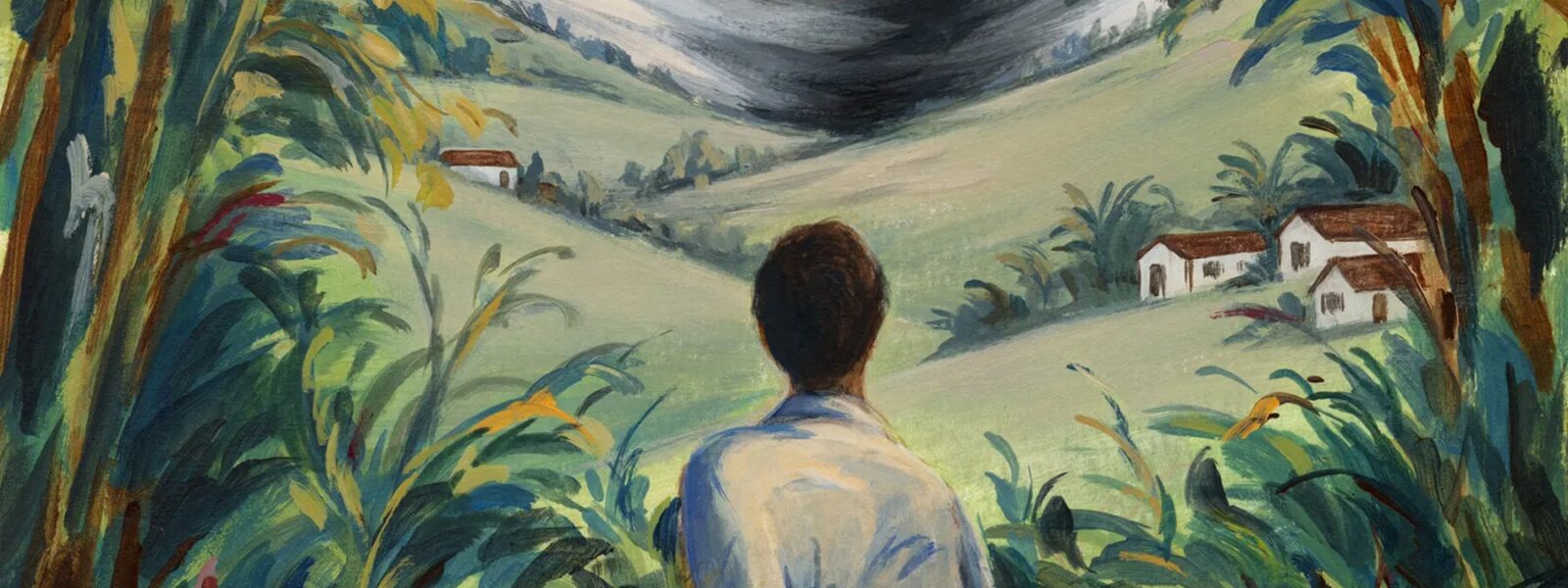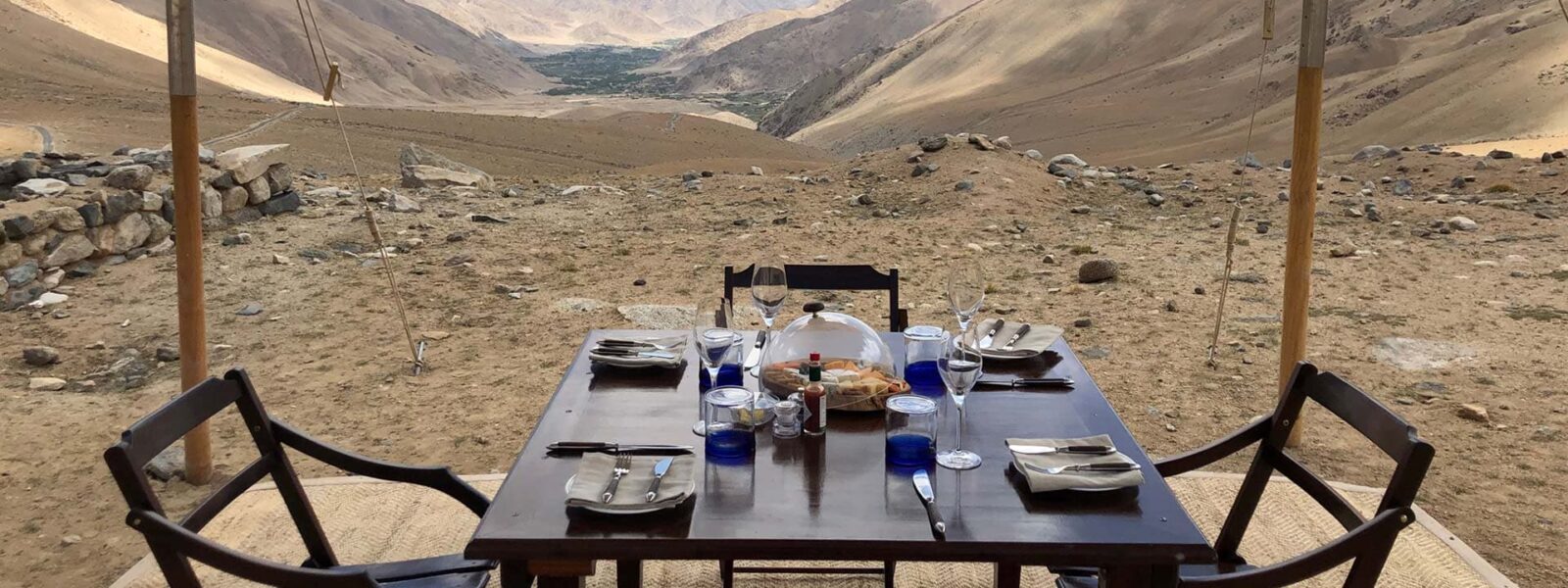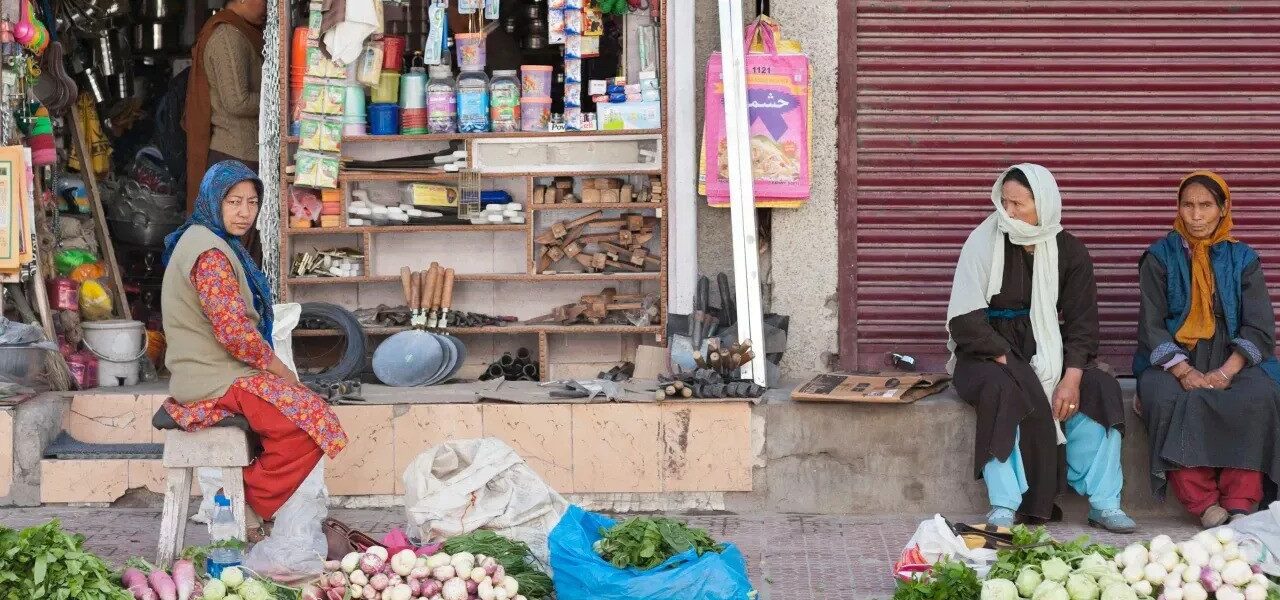Where Time Stands Still: The First Breath in Ladakh
There’s a moment, just after the aircraft breaks through the clouds and before it touches the tarmac in Leh, when the entire world seems to hold its breath. The mountains rise like ancient sentinels, white-capped and weathered, cradling valleys where time moves slowly, deliberately. Welcome to Ladakh — not the bustling Leh you’ve seen in photographs, but the heart of its soul: the timeless villages tucked between ridgelines and rivers.
The first breath here is thin, but it’s not just the altitude. It’s the stillness. The quiet. It’s the realization that you’ve arrived in a place where modernity tiptoes lightly, and stories are passed not through screens, but from wrinkled hands and firelit kitchens. In these mountain hamlets, you’ll find a rhythm tuned to yak bells and spinning prayer wheels, not car horns or deadlines.
This journey isn’t about ticking off tourist spots. It’s about slowing down — walking ancient footpaths between barley fields, sipping butter tea with a grandmother whose gaze carries generations, and watching the shadows stretch across stupas as dusk falls early behind the cliffs. It’s about staying in homestays where the floor creaks and the soup simmers slowly, made with mountain herbs and care.
Ladakh’s timeless villages are scattered like forgotten jewels: Turtuk, where apricot blossoms flutter against stone walls; Skurbuchan, where monks pass silently through the alleys at dawn; Hemis Shukpachan, where cedars whisper prayers older than memory. These places aren’t staged for visitors. They are lived in, loved, and layered with the textures of real life — prayer flags frayed by wind, worn stairways smoothed by barefoot steps, and eyes that meet yours without hurry.
As we begin this journey through Ladakh’s quietest corners, let us leave behind the idea of “seeing everything” and embrace “feeling deeply.” Let us listen to the whispers of the Himalayas — not shouted through tour buses or itineraries, but spoken gently in the folds of these remote highland homes.
This column will be your guide, not with a checklist, but with a story. Together, we’ll explore the best villages in Ladakh to visit for a cultural journey, the experience of staying in Ladakhi homestays, and the beauty of slow travel through the Himalayas. Whether you seek a spiritual journey or simply a break from the noise, you’ll find it in the stillness here — where time, at last, stands still.
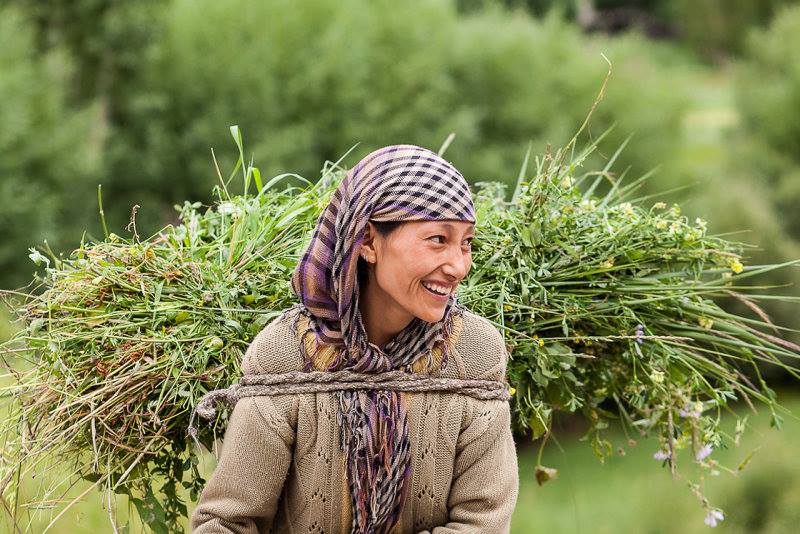
Setting the Scene: What Makes Ladakh Timeless
Not all places are made to be hurried through. Some landscapes demand reverence — not in silence, but in slowness. Ladakh is one of them. This high-altitude plateau, nestled between the Greater Himalayas and the Karakoram Range, does not shout its presence. It murmurs, it waits, and it reveals itself only to those who linger. Here, timelessness is not a metaphor. It is a way of being.
For centuries, Ladakh’s villages have endured in isolation, shaped by wind, stone, and belief. Roads are a recent invention; tradition is not. The pace of life here is measured in harvest cycles, not in hours. In villages like Skurbuchan, Tia, or Uley Tokpo, time feels like a wheel — circular, not linear. You don’t just see the past in Ladakh. You walk through it.
Modern maps might define Ladakh by its borders, but its essence lies in the spaces in between: in the dry stone walls that separate barley fields, in the hand-carved mani stones stacked by mountain trails, and in the simple act of lighting a yak butter lamp at dusk. The air carries a kind of memory here — one that hasn’t been overwritten by commercial tourism. It’s no wonder that these heritage villages of Ladakh are now drawing a different kind of traveler — those searching not for Instagram shots, but for meaning.
To understand Ladakh’s timelessness is to understand its resilience. Winters here are harsh, with snow cutting off entire regions for months. And yet, life persists. In houses built from mud and sun-dried bricks, people survive on dried vegetables, storytelling, and warmth passed from one generation to the next. This is not a lifestyle you can buy. It’s one you’re invited to witness — humbly, and with gratitude.
If you’ve ever wondered what “off the beaten path” truly means, come here. Not just to places like Leh, but further — to where Wi-Fi fails and conversations begin. In these villages, you’ll find more than just beauty. You’ll find a connection to something enduring: to Himalayan village life, to ancient customs untouched by trend, to the rhythm of the mountains themselves.
So before we step into individual villages, take this moment. Breathe it in. This is not a postcard version of Ladakh. This is Ladakh — raw, real, and quietly majestic. And it has been waiting, patiently, for someone just like you.
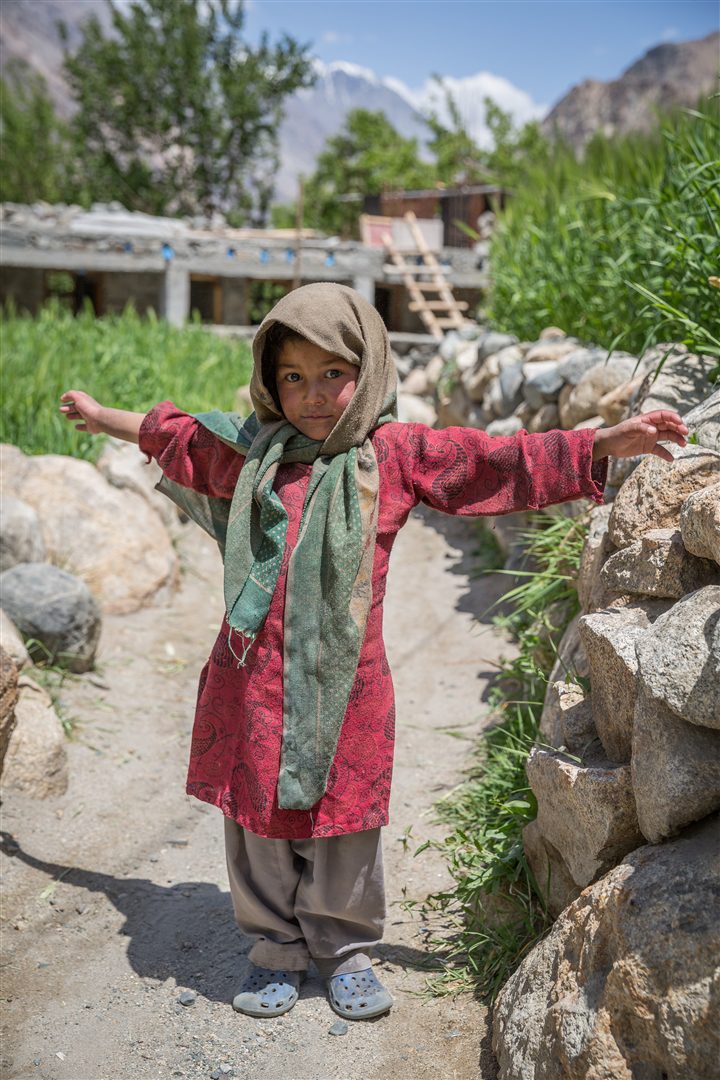
Turtuk – A Village of Apricots and Forgotten Borders
The road to Turtuk is more than just a drive — it’s a slow unraveling of borders, both geographic and emotional. As your jeep winds through the Nubra Valley, past sand dunes and grazing Bactrian camels, the terrain shifts subtly, and so does the feeling in your chest. You are heading not just north, but toward a village whispered about in hushed tones, where apricot trees bloom beside stone houses, and history lingers in every doorway.
Turtuk rests near the Line of Control, once part of Pakistan until the 1971 war quietly redrew the lines. Yet you’d never guess its past from the smiles of its people. The villagers here speak Balti, follow centuries-old traditions, and live in a harmony that defies the turbulence of maps. As you walk through its narrow alleys, flanked by canals and carved wooden balconies, it feels like discovering a secret — one too gentle to be shouted aloud.
It was in Turtuk that I met Fatima, an elderly woman in a rose-colored scarf, drying apricots on a rooftop. She beckoned me up with a shy nod and shared a handful, still warm from the sun. No words passed between us at first — just the sound of wind and the distant call to prayer from the village mosque. Later, over salty butter tea, she told me about winters without electricity, weddings with dancing that lasted three nights, and her grandson studying in Leh.
Turtuk invites you to participate, not just observe. You can stay in a homestay built from river stone and earth, share meals of buckwheat pancakes and spicy yak meat, or simply watch twilight settle over apricot groves as children chase goats home. There are no luxury hotels here, and that’s precisely the point. What you receive instead is something rarer: an unfiltered window into Himalayan village life.
This village is a paradise for those seeking authentic cultural experiences in Ladakh, and its offbeat charm makes it one of the best hidden gems in the Himalayas. You won’t find crowds here — just warmth, heritage, and a sense that the world, at least for now, has paused.
If you visit, come with humility. Leave your checklist behind. And when Fatima hands you an apricot — sun-dried, sweet, and dusted with mountain air — accept it with both hands. It’s more than a fruit. It’s an invitation to slow down, stay present, and remember how stories are really meant to be shared.
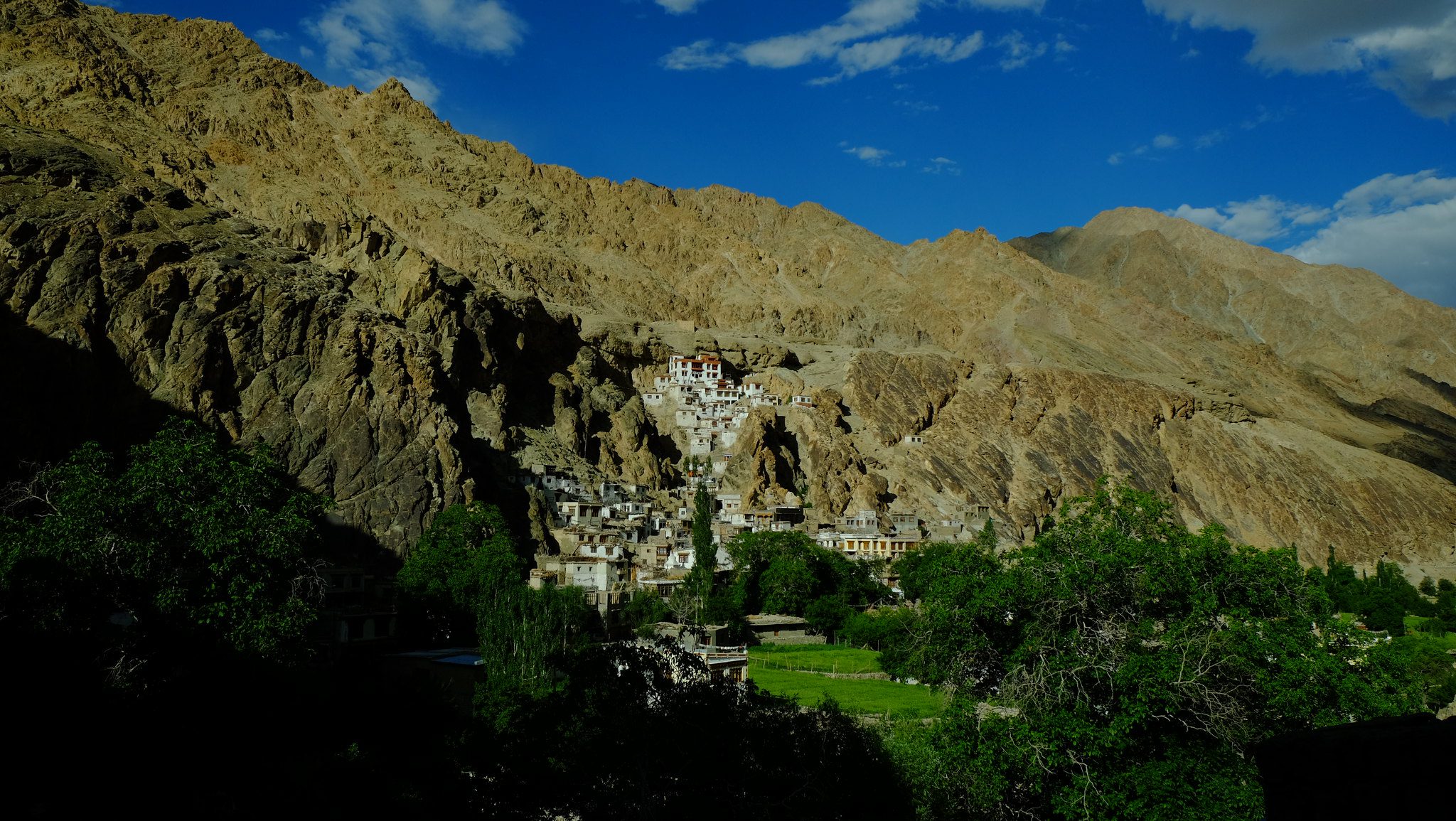
Skurbuchan – Among the Whispering Fields
If Turtuk is a quiet secret, Skurbuchan is a gentle sigh carried by the wind — a village that neither demands attention nor hides from it. It simply is. Located west of Leh on the road to Kargil, Skurbuchan rests on a gentle slope above the Indus River, its homes layered like prayer beads upon the hills, each connected by footpaths, water channels, and centuries of patience.
What struck me first wasn’t the view, though the sweeping golden fields of barley and the snow-dusted peaks beyond would move even the most stoic traveler. It was the silence. Not emptiness, but a full, living quiet — the kind that holds birdsong, the rustle of leaves, and the sound of a prayer wheel spun by unseen hands. This is a place where nature is not observed; it is lived alongside.
I arrived in Skurbuchan on a sun-drenched afternoon, guided by a local named Namgyal, whose family has lived in the village for generations. As we wandered between houses painted in white lime and roofed with stacked willow branches, he pointed to a small school, a hidden chorten, and the ancient apricot tree his grandfather planted. “Our time is circular here,” he said. “Not fast, not slow. Just returning.”
In a modest kitchen, I shared lunch with Namgyal’s family — a bowl of skyu, thick and hearty, seasoned with wild greens gathered from the mountainside. His mother, wearing turquoise beads woven into her hair, laughed at my clumsy attempts to sit cross-legged. There was no performance here. Just life, unfolding in its own rhythm. That is the power of Skurbuchan — it asks for nothing and offers everything.
Skurbuchan is ideal for travelers seeking sustainable tourism experiences in Ladakh. It offers a chance to explore the cultural heart of the Himalayas without the bustle of popular trekking circuits. Homestays are simple but rich in connection. You’ll find wisdom in shared silences, warmth in shared tea, and meaning in the offbeat paths through Ladakh’s agricultural villages.
If you’re tracing the pulse of Ladakh, don’t skip Skurbuchan. Let its whispering barley fields, its stone alleys, and its patient way of being show you what it means to belong to the land — not as a visitor, but as a respectful witness. Here, nothing is packaged, and everything is offered.
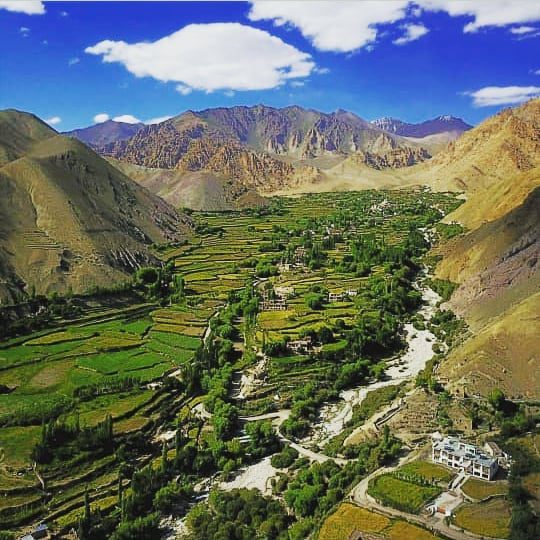
Hemis Shukpachan – Between Cedars and Stupas
There’s something undeniably sacred about Hemis Shukpachan — and it’s not just the gompa perched above the village, or the centuries-old stupas weathered by wind and time. It’s in the scent of wild juniper carried on the breeze, in the way the sun falls softly on the cedar trees, and in the sense that this is a place where even the mountains seem to pause in reverence.
Nestled in the sham valley of Ladakh, Hemis Shukpachan is one of the greenest villages in the region, thanks to the presence of natural spring water and the rare Shukpa trees (cedars) from which the village takes its name. The landscape feels tender here — softer curves, more generous shade, and a stillness that hums with spirit rather than silence.
I arrived on foot, having walked from Yangthang along a path lined with mani walls and chortens. A monk I met along the way — his maroon robes dusted with earth — told me that Hemis Shukpachan is not famous, and that’s its blessing. “It’s for those who need it,” he said simply, smiling without reason. That afternoon, I found myself sitting beneath a cedar, listening to the wind as it moved through the needles like a breath through prayer beads.
The monastery here is modest, but it feels alive with memory. I joined the morning puja, surrounded by boys learning the rhythms of ancient chants. The sound was not polished, not perfect — but deeply human. One young monk offered me a butter tea without looking up from his page. Outside, an elderly woman spun a prayer wheel with her right hand and fed a stray dog with her left.
Hemis Shukpachan is a quiet haven for those seeking a spiritual journey through Ladakh. It’s also part of the Sham Valley Trek, ideal for those who prefer gentle, high-altitude village walks over strenuous peaks. Homestays here offer a front-row seat to Ladakhi life — cooking on open hearths, tending to sheep, and gathering around evening fires to swap stories in low voices.
There are no loud wonders here, no urgent thrills. And that’s the beauty. In Hemis Shukpachan, the extraordinary hides within the ordinary — in a shared smile, a prayer flag’s dance, the silence between two cedars. If you allow yourself to slow down, you might hear it too: the faint heartbeat of Ladakh’s soul, pulsing beneath your feet, between the stupas and the sky.
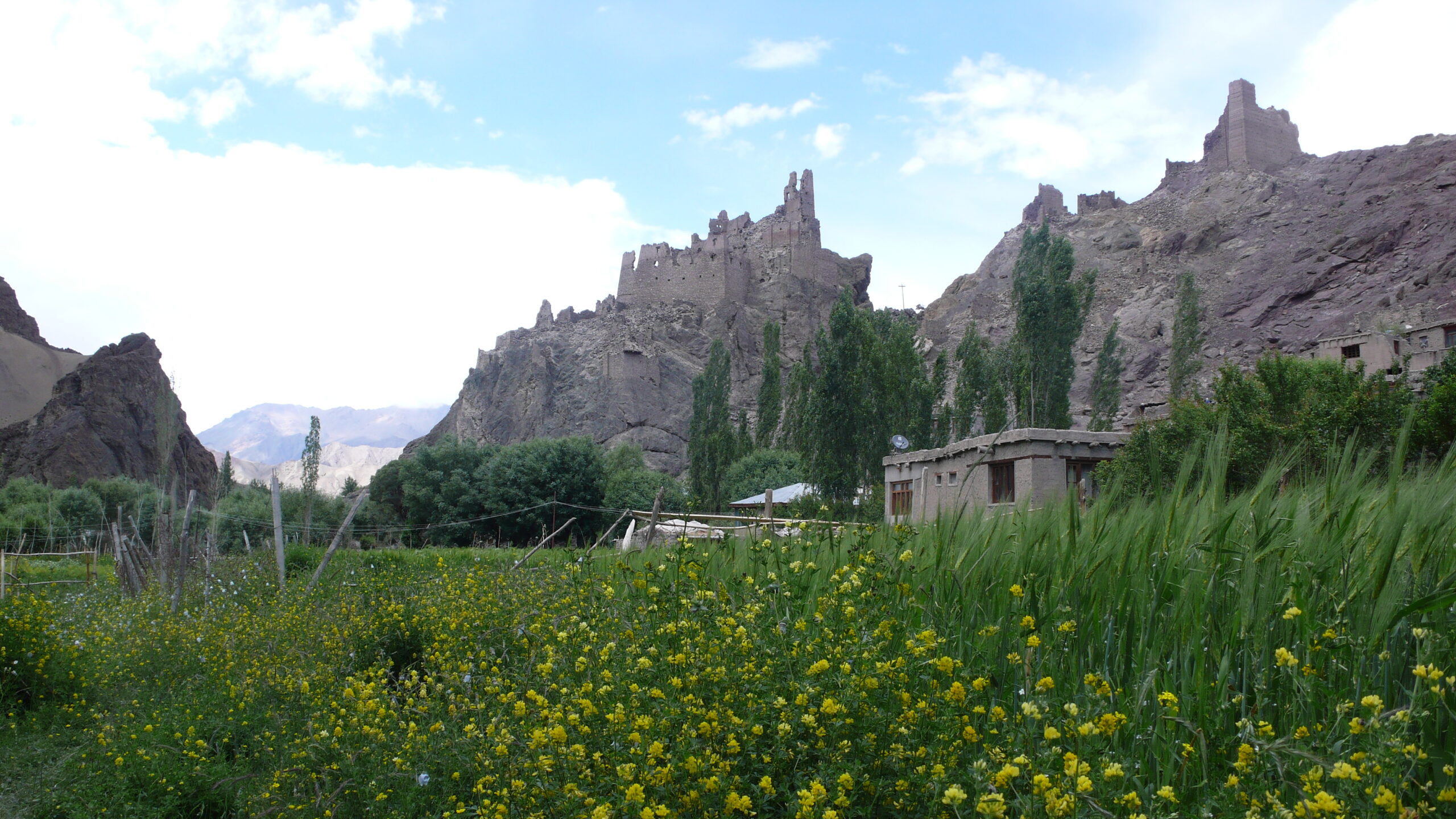
Life in the Villages – Slowness, Silence, and Soul
To understand Ladakh, you must first surrender your sense of urgency. These villages were not built for haste. Their stories are not meant to be consumed in quick bursts of sightseeing. They unfold slowly — like a pot of yak milk simmering on a stove, or the careful weaving of wool on a loom. Time here moves with the seasons, not the clock.
In villages like Likir, Temisgam, and Tingmosgang, life is measured in quiet moments: the clatter of prayer beads against weathered hands, the rustle of barley stalks as a breeze slips across the fields, the creak of an old wooden door swung open at dawn. Morning starts not with alarms, but with the faint murmur of a puja from the monastery on the hill.
During my stay in one such village, I found myself waking early — not to rush, but to listen. I’d sit by the window, a cup of salted butter tea warming my hands, and watch as the village slowly stretched into life. Women swept courtyards. Children with flushed cheeks carried water in silver pots. Smoke curled from low chimneys, tracing prayers into the sky.
Meals were never hurried. A typical lunch might include thukpa or skyu, served with foraged greens and laughter. No phones buzzed. Conversations drifted, paused, resumed. There was space between sentences — not empty space, but sacred. That, perhaps, is what gives these villages their soul: the reverence for pause, for breath, for being.
For travelers seeking a slow travel experience in Ladakh, this is where the magic lies. Not in the monuments or the views — though they are striking — but in the everyday: in drying apricots on rooftops, in stories shared by candlelight, in the generosity of those who have little, yet give openly. These are the hidden rhythms of Himalayan village life, and they cannot be rushed.
The silence here is not absence. It is presence. It’s the kind of silence that lets your thoughts breathe, your heart recalibrate. In the hush between mountains, you begin to hear things: your footsteps, the wind, your own voice returning to you softer, slower. If you’ve ever longed to reconnect — with yourself, with nature, with a simpler kind of wisdom — Ladakh’s villages will welcome you. Not loudly. But wholly.
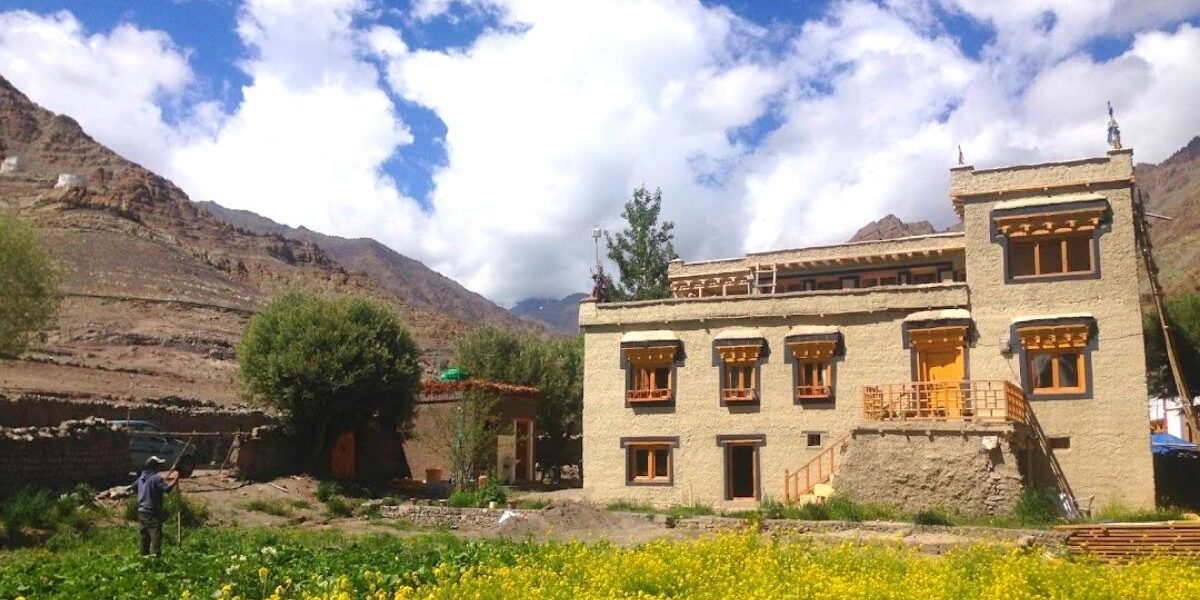
Staying with Locals – The Power of Homestays
You haven’t truly experienced Ladakh until you’ve sat cross-legged on a woven rug in a local home, sharing a bowl of thukpa while laughter rises with the steam. Hotels may offer comfort, but homestays in Ladakh offer something far rarer: connection. They open a door not just to a room, but to a way of life — and if you enter respectfully, you leave changed.
My first homestay was in Yangthang, a village that folds into the mountains like a secret. The house was made of stone and mud, simple and strong. Inside, the warmth wasn’t just from the stove, but from the smiles. My host, Sonam, greeted me with butter tea and a gentle curiosity. We spoke in a mix of English, Ladakhi, and shared silences that said more than words.
Each evening, we cooked together — or rather, I watched as Sonam’s mother rolled out dough with practiced hands, her fingers moving with the memory of generations. Dinner was always shared: fresh garden greens, lentils, and yak milk yogurt. Afterward, we’d sit by the hearth, listening to the wind drum softly against the windowpanes. Her father would hum an old folk song. I didn’t know the words, but I felt them.
These homestays are a cornerstone of sustainable tourism in Ladakh, offering travelers not just a place to sleep, but a deeper understanding of the culture and landscape. They also support local families directly, helping them preserve their homes, stories, and way of life. It’s a model built not on transactions, but on trust.
For those searching for authentic Ladakhi village experiences, choosing to stay in a homestay means learning the rhythm of the land: waking with the light, washing in spring water, helping gather herbs or chop wood. It’s not a curated experience — and that’s precisely the point. You are not a guest at a performance. You are a quiet participant in something real.
Before you arrive, bring gifts small and meaningful — dried fruit, pens for children, or a photo from your home. But more than that, bring your openness. These homes have no reception desks, no menus, no Wi-Fi. What they offer instead is a human welcome that needs no translation. And when you leave, it won’t feel like checking out. It will feel like saying goodbye to family.
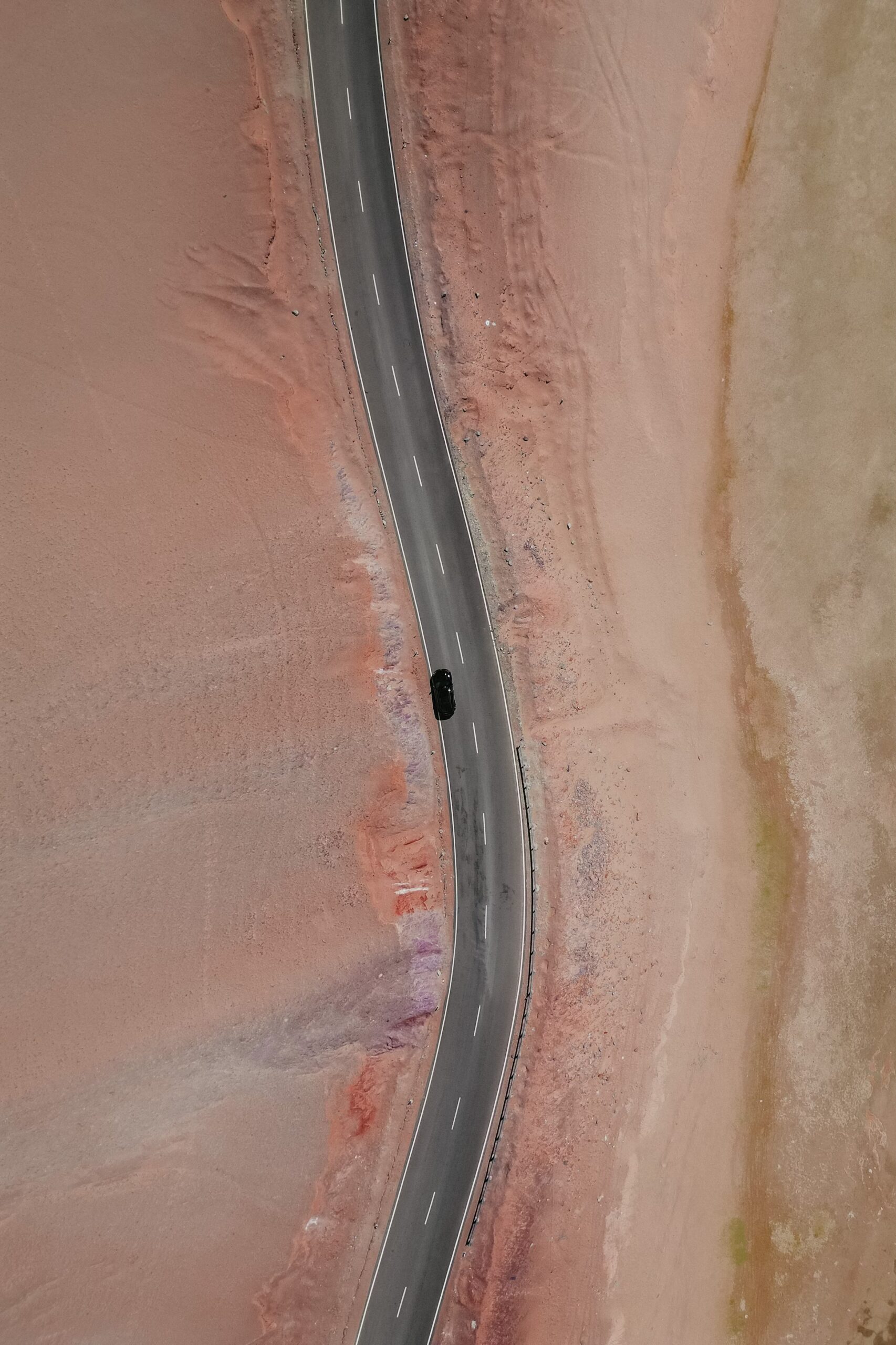
Practical Wisdoms from the Road
There’s a rhythm to traveling through Ladakh’s timeless villages — and it’s not dictated by apps or alarms. Instead, it comes from listening: to the landscape, to the people, and to your own breath as it adjusts to thinner air and slower days. While this journey is less about logistics and more about feeling, a few quiet lessons from the road can go a long way.
Getting there is part of the experience. Many of Ladakh’s villages are best reached on foot, or by dusty roads that demand patience rather than precision. From Leh, local jeeps and buses travel to hubs like Temisgam or Lamayuru, but to reach places like Hemis Shukpachan or Turtuk, you’ll need to either trek or hire a trusted driver. Ask around in Leh — recommendations travel by word of mouth, and the right local guide can become the best part of your story.
Acclimatization is not optional. These villages sit at altitudes of 3,000 meters and above. Before venturing into remote hamlets, spend two full days in Leh. Drink water. Rest. Listen to your body. This isn’t just for safety — it’s about tuning into the pace that Ladakh offers: slow, deliberate, respectful.
Pack light, but wisely. Bring layers — mornings are crisp, afternoons sun-soaked, and evenings chilly, even in summer. A shawl or scarf doubles as sun protection and monastery cover. Wet wipes, a torch, and a power bank will be more useful than gadgets. Don’t forget a small gift for your host — a gesture more meaningful than money.
Navigation here is not digital. Cell coverage fades quickly once you leave Leh, and many villages have no signal at all. Instead, trust your feet and local advice. If you’re trekking between villages on the Sham Valley Trail or beyond, carry a physical map and let locals point the way. They’ll know which streams are dry and which trails the goats have taken.
When to visit? Late May to early September is ideal. Spring brings apricot blossoms, summer promises green fields and warm days, while September carries a golden hush as harvests begin. Each season offers something different — just like each village.
Respect runs deeper than rules. Always ask before photographing people, especially elders. Dress modestly, speak softly in monasteries, and offer both hands when receiving anything. In these highlands, manners are memory. What you do echoes longer than you know.
Travel in Ladakh’s villages is not about convenience — it’s about connection. Let the discomforts teach you something. Let the detours become part of the journey. And when a child offers you roasted barley from a shared pouch, take it with gratitude. You’re not just passing through these places. You’re being invited in.
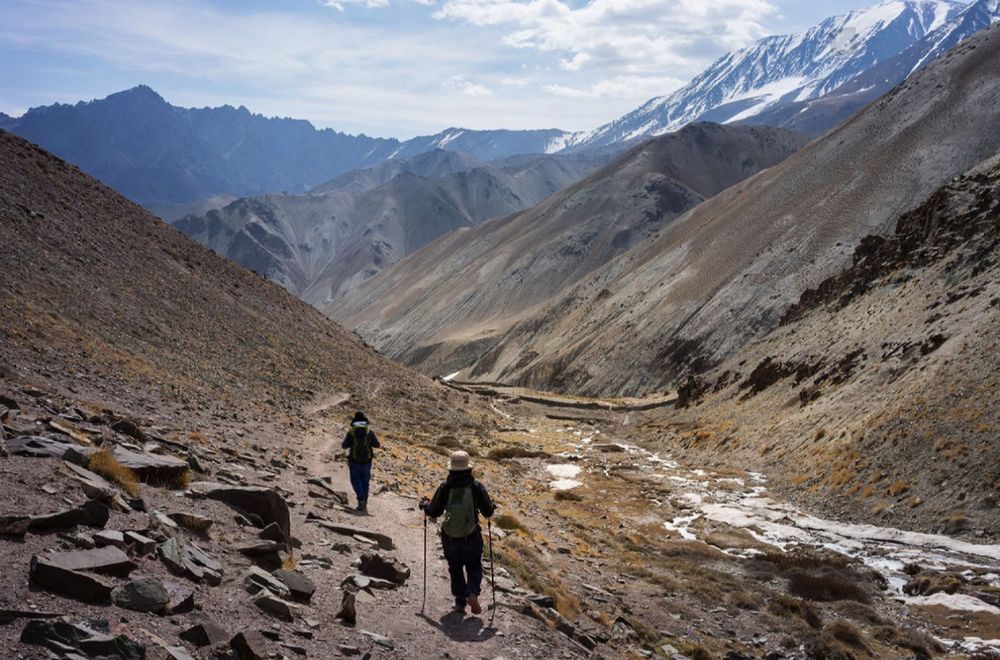
Final Reflection – What the Himalayas Whispered
Long after the jeep engines have cooled and the trekking boots are tucked away, it is the quiet moments that return. Not the photos or the checklist, but the sound of barley swaying in the breeze at Skurbuchan. The flicker of butter lamps in Hemis Shukpachan. The taste of sun-warmed apricots offered by a stranger in Turtuk. These are the whispers that stay with you — not loud, but lasting.
In Ladakh’s timeless villages, I found no grand monuments or sweeping performances. What I found instead was presence — a way of living so rooted, so patient, that it nudges you into stillness without asking. There, life is lived one cup of tea at a time, one story at a time, one footstep along an ancient trail at a time. And in that rhythm, something changes in you.
You begin to listen differently — not just with your ears, but with your entire body. You begin to see the land not as a backdrop, but as a living, breathing presence. You begin to understand that connection doesn’t come from perfect plans, but from imperfection, from getting lost and being found by someone kind enough to guide you home.
This journey through Ladakh’s villages was never about escape. It was about arrival — into a slower way of seeing, a more intentional way of moving, a gentler way of being. The mountains taught me that silence is not emptiness, but space. That old age is not something to hide, but something to honor. That time, when not measured by urgency, becomes something sacred.
So, if you are searching for something — not a destination, but a deeper kind of experience — come here. Walk the stone paths. Share meals with strangers who feel like family. Let the wind speak in your ear and the sky remind you how small and lucky we are. This is not the Himalayas as a postcard. This is the Himalayas as a whisper.
And if you listen closely enough, you might just hear them say:
You’ve arrived.
Stay awhile.
About the Author
Elena Marlowe is a European travel columnist and cultural storyteller whose work bridges poetic narrative with practical wisdom.
With roots in the literary traditions of Britain and a heart drawn to the silent corners of the world, she writes immersive journeys that whisper — not shout — through landscape, language, and human connection.
When she’s not walking forgotten trails or sipping tea in Himalayan kitchens, Elena is crafting essays that remind us how to pause, listen, and travel deeper.
This series, “Whispers of the Himalayas,” is her love letter to Ladakh — a place where the mountains speak, and the villages remember.

